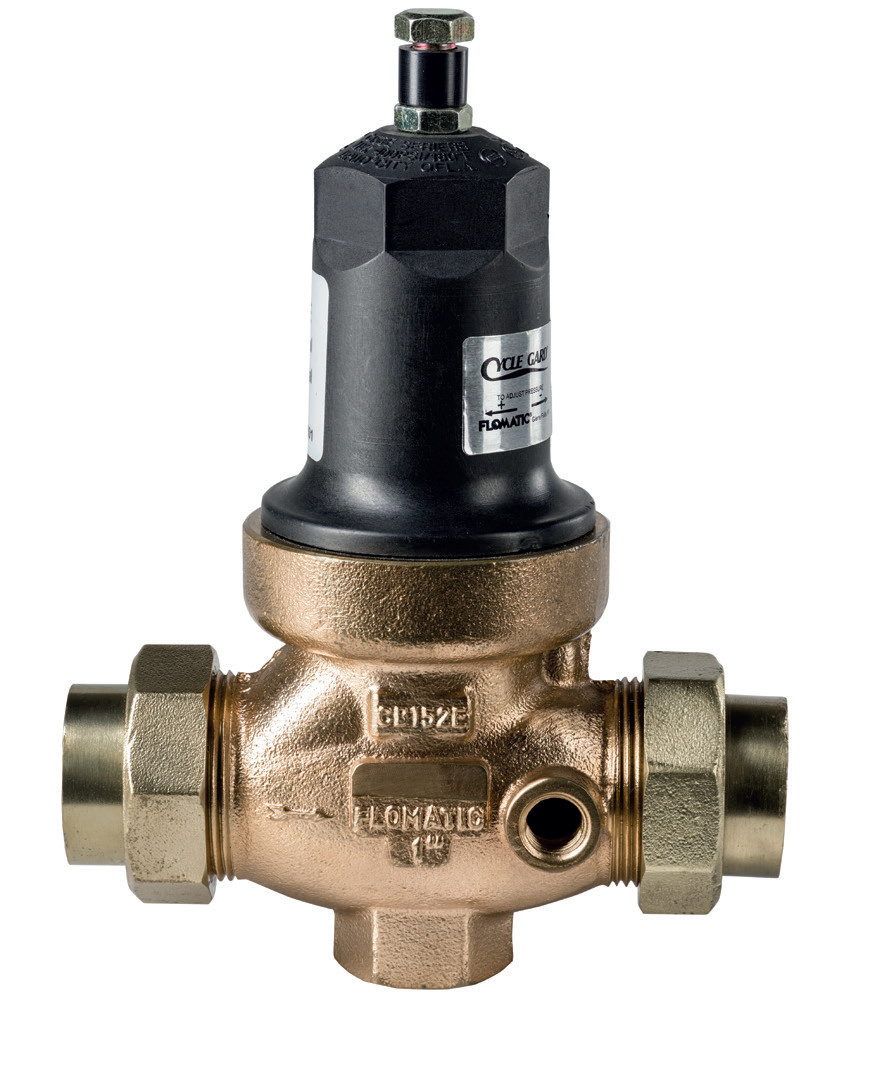Adequate and dependable water pressure is one of the simplest yet greatest luxuries of the modern-day household. Whether an individual is washing dishes, running a sprinkler system, getting the kids ready for the day, or finishing up a load of laundry, the benefits of consistent pressurized water are many. In fact, on average the American family uses over 300 gallons of water at home. Therefore, steady and reliable water pressure is an important feature for todays busy household plumbing system.
By Laura Jensen, Marketing & Communications Specialist – Flomatic Valves
What are Constant Pressure Pump Control Valves?
Constant pressure pump control valves are found in nearly every hydraulic system. These valves are specifically engineered to address flow regulation, stop rapid pump cycling, and ultimately prevent long-term hydraulic shock. What do constant pressure pump control valves do? Although they are best known for helping keep water constantly flowing at a constant pressure in a well system in conjunction with a pump and bladder tank, constant pressure pump control valves also offer:
- Assistance with rapid pump cycling while also maintaining pre-set operating pressures,
- Water hammer prevention and are practically maintenance-free,
- Clog resistance while also providing a longer pump life,
- Electricity and energy cost savings,
- Continued and extended pressure for older/existing pumps,
- A simple design and construction,
- Easier maintenance than a typical VFD system.


How Constant Pressure Pump Control Valves Work
In a traditional water-well system, where the size of a pressure tank is required to correctly match the attached size of a pump. For example, a 10 GPM pump requires a 10 GPM drawdown on a tank and at least a one-minute runtime on the pump to cool it off. With a constant pressure pump control valve, tank and pump sizes are not required to match each other.
Typically, constant pressure pump control valves are hydraulically operated — meaning electrical power is not required for functionality. The valves are generally installed in front of the pressure tank and set to a single automatic pressure setting instead of a pressure range. For example, if a constant pressure pump control valve is set at 50 PSI and used with a 40/60 switch, when the pressure in the tank falls to 40 PSI, the pump turns on to bring the pressure up to 50 PSI. When it reaches 50 PSI, the valve will close from 50 PSI to 60 PSI and the tank will be filled at a reduced rate due to a small amount of water continuing to run through the valve even after its closing.
This is achieved in one of two ways depending on the style of the constant control pump valve in use. A valve may either contain an externally adjustable bypass or a slotted seat disc, also known as a notched seat or leaky seat. Both variations will allow water to pass through the valves even when it is fully closed; the big difference is, how much water.
Top-Notch Design and Strength from Within
Constant pressure pump control valves work using an internal cartridge that moves vertically within it depending on downstream pressure. It also moves vertically when the pressure reaches below the setpoint and closes when it reaches desired PSI. At the bottom of the cartridge is a stainless-steel plate with a small notch cut out. It is through that opening that 1 GPM of water will continue to flow — even when the valve is seated and closed. Ultimately maintaining durability, consistency, and efficiency throughout the water well system.
The advantages of a notched seat design stem from its simplicity. Established in the industry for years, a notched-seat design is common among constant pressure control valves. Constant pressure control valves featuring a slotted seat, will let a fixed volume of 1 GPM through the closed valve. Saving the homeowner energy and cost-related savings.

Where Else Are Constant Pressure Pump Control Valves Used?
Constant pressure pump control valves are best known in the well water industry, but their applications span far past industrial and household use. Ranging in use from pump booster systems to irrigation/sprinkler systems and beyond, the benefits are endless for the following applications:
- Residential areas or domestic well water systems;
- Municipal systems or public water systems;
- Apartments and subdivisions;
- Schools, farms, and parks.



